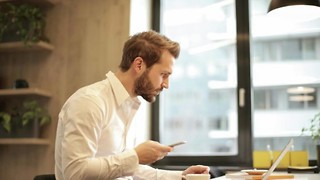The David Starkey problem with our publicity
A man with David Starkey’s views should not be the face of university publicity material

The ‘Dear World… Yours, Cambridge’ campaign recently released a video aimed at alumni and donors, in an attempt to raise two billion pounds to fund the university and its various projects. The video is part of a long list of similar attempts at publicity that Cambridge, like any institution, must use in order to keep itself afloat.
The problem many had with the video was the use of David Starkey as one of its key figures; he opens and closes it, and has a substantial speaking role. Anyone with a long memory probably winced, like I did, when they watched it. Here is a university supposedly committed to ensuring the best working environments for all, using the face of a man who has expressed a particular disdain for anything non-white existing in a British context. His comments on multiculturalism and treatment of other non-white staff members have lead to direct clashes with members of his own faulty (Richard Evans and Joya Chatterji). This alone should have been enough to send alarm bells ringing for anyone who wanted to portray Cambridge in a positive light to the international community.
Using David Starkey in that video demonstrates a blatant disregard for the welfare of BME students. So many of the comments he has made in public demonstrate a deep-rooted racism. When he declared that the reason behind the London Riots of 2011 was that “the whites [have] become black”, what he suggested was there is something inherently animalistic, savage and nihilistic about blackness and black culture. This is an idea that legitimises the use of excessive force against black bodies; it is this kind of thinking that means that we are always viewed as a threat. It is why many cross the road when they see black men approaching them.
Personally, I find it difficult to understand how such a respected historian could not see that he had borrowed his language from centuries of the same racist ideologies that worked to secure the subjection of black bodies. What is particularly harrowing about Starkey is the confidence with which he was able to air such opinions. This is what makes them so malicious: there is no ignorance here. He was fully aware of what his intentions were when he spoke. Perhaps this confidence came from his understanding that no matter what he said, his position and reputation, as well as his links to this university, would remain secure. Such is the confidence of white men who are allowed to be nuanced; while he faced just criticism for his remarks, Starkey’s defenders came out to argue that his language had been ‘taken out of context’ or ‘overblown’; repeating the idea that he couldn’t possibly be racist; he couldn’t perpetuate violent ideas because they knew him; they could vouch for him; he is a ‘good’ person.
Using him in the video solidifies the silence and invisibility of non-white students. This university’s continued links with him demonstrate the lack of any critical thinking about how they market themselves. If the aim is to present Cambridge as a world-class institution that produces “future leaders,” surely Starkey is a deterrent.
How must his face look to prospective BME students who are already woefully underrepresented? How must it look for Cambridge to cuddle up to a man that seems quite proud of his bigotry; in what way does that communicate to them that this might be a place worth studying at? How must it look to BME alumni who are in a position to give back? The message it conveys is that they were not even considered because our idea of the ideal Cambridge student, the ideal donor, is still one who shares Starkey’s characteristics. To ignore the violence of his comments, to brush them under the rug because of his well respected status as an academic is tantamount to this university admitting that they care more about money than maintaining structures that continually disadvantage BME applicants. This is more than just a matter of disagreement. Being able to work alongside people with different opinions is important, of course; but not when that opinion fundamentally undermines somebody’s right to exist and perpetuates their dehumanisation.
The intellectual and emotional labour that BME students at this university expend is infinitely greater than their white peers, but often it feels as if attacks on our humanity are relentless; if not from white curricula and everyday microaggressions, then it is from the continued institutional approval of ‘academics’ who express their acceptance of Enoch Powell’s “them and us” rhetoric under the guise of “just speaking plainly”. This critique is not aimed at the participants in the video: who knows if they knew they were working alongside Starkey? Each of them probably had complex reasoning. It is a call for a greater understanding of how Starkey’s presence in this video as part of a billion pound campaign legitimises his ideas and opinions. It is a call for recognition that it further alienates current students from any sense of belonging.
One thing that the video suggests is that our ethos is one of pride; pride at each college’s unique history, pride at the achievements of our alumni, pride at being at the forefront of cutting research, and so on and so forth. But how are BME students supposed to engage with that feeling when we are continually disregarded?
 News / Cambridge academics stand out in King’s 2026 Honours List2 January 2026
News / Cambridge academics stand out in King’s 2026 Honours List2 January 2026 Interviews / You don’t need to peak at Cambridge, says Robin Harding31 December 2025
Interviews / You don’t need to peak at Cambridge, says Robin Harding31 December 2025 Comment / What happened to men at Cambridge?31 December 2025
Comment / What happened to men at Cambridge?31 December 2025 News / Varsity’s biggest stories of 202531 December 2025
News / Varsity’s biggest stories of 202531 December 2025 Features / “It’s a momentary expression of rage”: reforming democracy from Cambridge4 January 2026
Features / “It’s a momentary expression of rage”: reforming democracy from Cambridge4 January 2026










